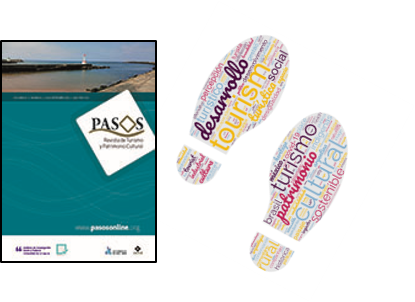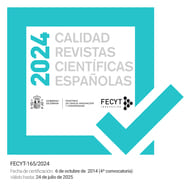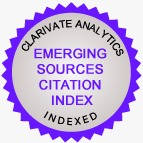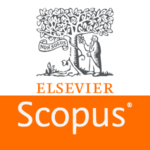Place Attachment in protected areas: An exploratory study
DOI:
https://doi.org/10.25145/j.pasos.2023.21.032Keywords:
Place Attachment, Protected Areas, Place Dependence, Place Identity, Affective Attachment, Social BondsAbstract
With the increasing number of destinations and thus competition, there is a need to study visitors' behaviour and how to achieve their loyalty. The aim of this exploratory study is to test and analyse the Place Attachment scale in the context of tourist destinations. The methodology applied was quantitative, and data collection was carried out through the use of a questionnaire survey. The territory under analysis was a protected area in Northern Portugal, Peneda-Gerês, the only national park in the country. A total of 507 valid questionnaires were collected and subsequently coded. According to the data collected, there are dimensions where the degree of agreement is higher than others: the dimensions of Place Dependence and Place Identity stand out over the dimensions of Affective Attachment and Social Bonds. This happens because people frequent certain places more because of what the place provides or offers than because of the social relationships that may occur in that place.
Downloads
Publication Facts
Reviewer profiles N/A
Author statements
- Academic society
- PASOS. Revista de Turismo y Patrimonio Cultural
- Publisher
- Instituto Universitario de Investigación Social y Turismo. Universidad de La Laguna (España) - Instituto Universitario da Maia ISMAI (Portugal)
References
Arnberger, A., Budruk, M., Schneider, I. E., & Wilhelm Stanis, S. A. (2022). Predicting place attachment among walkers in the urban context: The role of dogs, motivations, satisfaction, past experience and setting development. Urban Forestry & Urban Greening, 70, 127531. https://doi.org/https://doi.org/10.1016/j.ufug.2022.127531
Belanche, D., Casaló, L. V, & Rubio, M. Á. (2021). Local place identity: A comparison between residents of rural and urban communities. Journal of Rural Studies, 82, 242–252. https://doi.org/https://doi.org/10.1016/j.jrurstud.2021.01.003
Bowlby, J. (1977). The making and breaking of affectional bonds: I. Aetiology and psychopathology in the light of attachment theory. The British Journal of Psychiatry, 130(3), 201–210.
Brocato, E. D. (2006). Place attachment: an investigation of environments and outcomes in a service context [The University of Texas at Arlington]. http://hdl.handle.net/10106/244
Cheung, T. T. T., & Oßenbrügge, J. (2020). Governing urban energy transitions and climate change: Actions, relations and local dependencies in Germany. Energy Research & Social Science, 69, 101728. https://doi.org/https://doi.org/10.1016/j.erss.2020.101728
Cohen, J. B., & Areni, C. S. (1991). Affect and consumer behavior.
Cresswell, T. (2014). Place: an introduction. John Wiley & Sons.
Damasio, A. R. (2003). Looking for Spinoza: Joy, sorrow, and the feeling brain. Houghton Mifflin Harcourt.
Daryanto, A., & Song, Z. (2021). A meta-analysis of the relationship between place attachment and pro-environmental behaviour. Journal of Business Research, 123, 208–219. https://doi.org/https://doi.org/10.1016/j.jbusres.2020.09.045
Gatti, F., & Procentese, F. (2021). Experiencing urban spaces and social meanings through social Media:Unravelling the relationships between Instagram city-related use, Sense of Place, and Sense of Community. Journal of Environmental Psychology, 78, 101691. https://doi.org/https://doi.org/10.1016/j.jenvp.2021.101691
Halpenny, E. A. (2010). Pro-environmental behaviours and park visitors: The effect of place attachment. Journal of Environmental Psychology, 30(4), 409–421. https://doi.org/10.1016/j.jenvp.2010.04.006
Harris, P. B., Brown, B. B., & Werner, C. M. (1996). Privacy regulation and place attachment: Predicting attachments to a student family housing facility. Journal of Environmental Psychology, 16(4), 287–301.
Hidalgo, M. C., & Hernandez, B. (2001). Place attachment: Conceptual and empirical questions. Journal of Environmental Psychology, 21(3), 273–281.
Hipp, J. (2010). What is the ‘neighbourhood’ in neighbourhood satisfaction? comparing the effects of structural characteristics measured at the micro-neighbourhood and tract levels. Urban Studies, 47(12), 2517–2536. https://doi.org/10.1177/0042098009359950
Holbrook, M. B., & Hirschman, E. C. (1982). The experiential aspects of consumption: Consumer fantasies, feelings, and fun. Journal of Consumer Research, 9(2), 132–140.
Jorgensen, B., & Stedman, R. (2001). Sense of Place as an attitude: lakeshore owners attitudes toward their properties. Journal of Environmental Psychology, 21(3), 233–248. https://doi.org/https://doi.org/10.1006/jevp.2001.0226
Kastenholz, E., Marques, C. P., & Carneiro, M. J. (2020). Place attachment through sensory-rich, emotion-generating place experiences in rural tourism. Journal of Destination Marketing & Management, 17, 100455. https://doi.org/https://doi.org/10.1016/j.jdmm.2020.100455
Li, X., & Zhang, T. (2021). Place identity and older residents’ coping strategies while ageing in declining neighbourhoods of urban China. Journal of Environmental Psychology, 78, 101692. https://doi.org/https://doi.org/10.1016/j.jenvp.2021.101692
Low, S. M., & Altman, I. (1992). Place Attachment. In I. Altman & S. M. Low (Eds.), Place Attachment (pp. 1–12). Springer US. https://doi.org/10.1007/978-1-4684-8753-4_1
Martins, H. (2018). O Turismo No Parque Nacional Da Peneda-Gerês: a Experiência Da Marca Do Destino, O Apego Ao Lugar, a Satisfação, Os Comportamentos Pró-Ambientais E As Intenções Comportamentais [Universidade de Coimbra]. https://doi.org/http://hdl.handle.net/10316/79717
Martins, H. (2020). Turismo em áreas protegidas: o caso do Parque Nacional da Peneda do Gerês. In A. J. Gonçalves, E.C., Martins, H. & Pinheiro (Ed.), Perspetivas sobre hospitalidade, turismo sustentável e desenvolvimento local (Edições IS). ISMAI.
Martins, H. (2022). Os impactos económicos da Covid-19 em eventos. Revista Turismo & Desenvolvimento, 38, 265–280. https://doi.org/10.34624/rtd.v38i0.25863
Martins, H., Carvalho, P., & Almeida, N. (2021). Destination Brand Experience: A Study Case in Touristic Context of the Peneda-Gerês National Park. Sustainability, 13(21). https://doi.org/10.3390/su132111569
Martins, H., Silva, C., Pinheiro, A., & Gonçalves, E. (2021). A importância da marca no turismo: o caso da entidade regional Turismo do Porto e Norte de Portugal. PASOS Revista de Turismo y Patrimonio Cultural, 19(4 SE-), 753–762. https://doi.org/10.25145/j.pasos.2021.19.049
McDaniel, C., & Gates, R. (2004). Pesquisa de marketing (Thomson Le).
Milligan, M. J. (1998). Interactional past and potential: The social construction of place attachment. Symbolic Interaction, 21(1), 1–33.
Proshansky, H. M., Fabian, A. K., & Kaminoff, R. (1983). Place-identity: Physical world socialization of the self. Journal of Environmental Psychology.
Ramkissoon, H., Graham Smith, L. D., & Weiler, B. (2013). Testing the dimensionality of place attachment and its relationships with place satisfaction and pro-environmental behaviours: A structural equation modelling approach. Tourism Management, 36, 552–566. https://doi.org/https://doi.org/10.1016/j.tourman.2012.09.003
Rubinstein, R. I., & Parmelee, P. A. (1992). Attachment to Place and the Representation of the Life Course by the Elderly. In I. Altman & S. M. Low (Eds.), Place Attachment (pp. 139–163). Springer US. https://doi.org/10.1007/978-1-4684-8753-4_7
Santos, V. (2015). Consumer Behaviour in Wine Tourism: Involvement, Destination Emotions and Place Attachment in the Wine Tourist Behaviour during the Porto Wine Cellars Visits Context. Universidade Fernando Pessoa (Portugal).
Scannell, L., & Gifford, R. (2010). The relations between natural and civic place attachment and pro-environmental behavior. Journal of Environmental Psychology, 30(3), 289–297. https://doi.org/https://doi.org/10.1016/j.jenvp.2010.01.010
Silva, R. (2015). O apego ao lugar como determinante das intenções comportamentais no turismo: o caso do Alentejo. In Turismo. University of Algarve.
Suchyta, M. (2020). Sense of place as a predictor of beliefs about energy development: A study in Pennsylvania’s Marcellus Shale. Energy Research & Social Science, 70, 101635. https://doi.org/https://doi.org/10.1016/j.erss.2020.101635
Trąbka, A. (2019). From functional bonds to place identity: Place attachment of Polish migrants living in London and Oslo. Journal of Environmental Psychology, 62, 67–73. https://doi.org/https://doi.org/10.1016/j.jenvp.2019.02.010
Wan, C., Shen, G. Q., & Choi, S. (2021). The place-based approach to recycling intention: Integrating place attachment into the extended theory of planned behavior. Resources, Conservation and Recycling, 169, 105549. https://doi.org/https://doi.org/10.1016/j.resconrec.2021.105549
Williams, P., & Soutar, G. N. (2009). Value, satisfaction and behavioral intentions in an adventure tourism context. Annals of Tourism Research, 36(3), 413–438. https://doi.org/https://doi.org/10.1016/j.annals.2009.02.002
Williams, & Patterson. (1996). Environmental meaning and ecosystem management: Perspectives from environmental psychology and human geography. Society & Natural Resources, 9(5), 507–521.
Williams, & Roggenbuck. (1989). Measuring place attachment: Some preliminary results. NRPA Symposium on Leisure Research, San Antonio, TX, 9.
Williams, & Vaske, J. (2003). The measurement of place attachment: Validity and generalizability of a psychometric approach. Forest Science, 49(6), 830–840.
Yan, N., & Halpenny, E. A. (2019). Tourists’ savoring of positive emotions and place attachment formation: a conceptual paper. Tourism Geographies, 1–21.
Yuksel, A., Yuksel, F., & Bilim, Y. (2010). Destination attachment: Effects on customer satisfaction and cognitive, affective and conative loyalty. Tourism Management, 31(2), 274–284. https://doi.org/https://doi.org/10.1016/j.tourman.2009.03.007
Downloads
Published
How to Cite
Issue
Section
License
Copyright (c) 2022 Hugo Martins

This work is licensed under a Creative Commons Attribution-NonCommercial-NoDerivatives 4.0 International License.
I confirm that the work is original (of my/our authorship), and that it will not be submitted to other journals or publications until the final resolution of the review process in PASOS, RTPC.
I authorize the publication of my work by PASOS, PSTN of free and open access in any of the formats that I deem appropriate, for an indefinite period of time and as a non-remunerated collaboration.
Likewise, the author(s) understands that the published work may be linked or deposited on any server or included in other publications (republication), provided that the new place and/or new edition references the original publication and acknowledges the authorship and copyright ownership of PASOS RTPC publications.
Authors understand that a plagiarism-self-plagiarism check will be performed, and the article may be removed at any time from the editorial flow.










